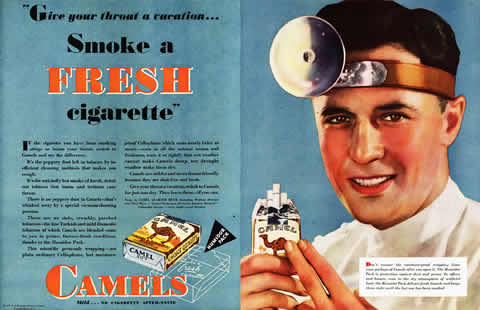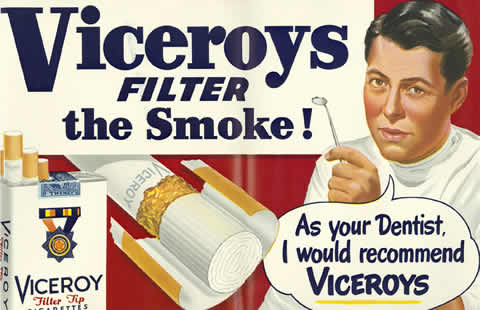College Branding: Rooted in Reality

 Some in higher education don’t like the concept of “branding.” This is so much the case that UK branding expert Robert Mighall wrote a lengthy article debunking some of the ideas those in higher ed have about the concept of branding (see College Branding Myths Demolished). To me, the biggest concern about the term “branding” is that it implies creating a false premise about the product, in this case, a college or university. I’ve included a few historic tobacco ads from a Stanford project as examples of branding at its worst.
Some in higher education don’t like the concept of “branding.” This is so much the case that UK branding expert Robert Mighall wrote a lengthy article debunking some of the ideas those in higher ed have about the concept of branding (see College Branding Myths Demolished). To me, the biggest concern about the term “branding” is that it implies creating a false premise about the product, in this case, a college or university. I’ve included a few historic tobacco ads from a Stanford project as examples of branding at its worst.
Even more benign forms of branding are often exercises in artificial image creation. While different perfumes certainly don’t smell the same, virtually all fragrance ads are about emotional positioning and have little or nothing to do with what’s actually in the little bottle.
Colleges Aren’t Beer
Branding a college shouldn’t be like typical consumer branding. Do you think that a typical consumer could taste the difference between the leading brands of American light beer? Unlikely, at best. Hence, beer marketers must pursue branding efforts that have little basis in the product itself, but rather focus on emotional ties, humor, tradition, and consumer identification. (Compare the blue-collar “Miller Time” ads to the more urban and sophisticated “Michelob” ads, for example. The beers might taste the same, but their branding is geared to appeal to completely different customers.)
Unlike many consumer products, though, colleges are very different. No two campuses are the same. Locations range from urban centers to bucolic rural settings. Some have long tradition, others are comparatively youthful. Even though some consumers may think of colleges as a commodity that can be ranked, shopped for price, and so on, the reality is that no two institutions are completely alike.
Furthermore, students and parents will readily perceive the actual differences between schools. They have reams of statistics at their disposal, and they will almost certainly conduct one or more lengthy visits to the campus. They will ask about the experiences of other students on sites like College Confidential, and share their own.
Branding campaigns that resemble those for fragrances or soft drinks simply won’t work in higher education. That’s not to say colleges and universities can’t make use of emotional branding techniques, but that approach alone won’t be enough to overcome the real differences students and parents will find between schools. College branding efforts need to be grounded in reality, and build from there.

